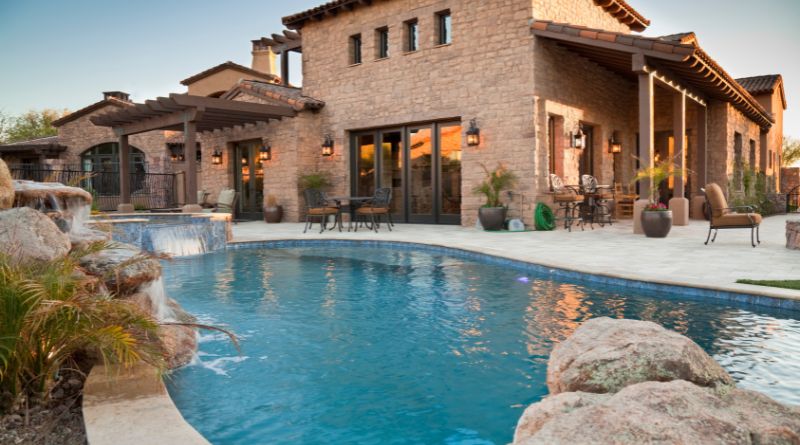Swimming pool construction services are available in all different forms. Whether it’s a new project or renovations, finding exemplary service for your needs is essential.
Forming
If you’re planning to build a swimming pool water slides San Clemente, you must ensure you have the proper materials and equipment. There are a few different methods for forming a swimming pool. Some are very simple, while others are complex. Each has its benefits and disadvantages.
Forming a swimming pool requires the placement of a cavity in the ground. The hole defines a central area for receiving water. It would be best if you also had a coarse aggregate drainage blanket. Ideally, the core of the swimming pool is formed by pouring concrete into a complete set of forms along both sides.
Once the core is in place, you can start laying down the concrete for the walls. Before you do this, however, you’ll need to cut out a well in the central drain opening. It will allow you to operate a hydrostatic valve 15 inside the finished structure.
Gunite application
A gunite swimming pool is an in-ground pool made of cement-like material. It can be created in virtually any size.
Gunite was originally the trademark name for a dry-mix pneumatic cement application process. It was first used in the year 1914. Today, it is one of the most popular types of construction for inground pools.
Unlike poured concrete, gunite is a mixture of sand, cement, and water that dries quickly. As a result, it makes it perfect for a pool’s shell. The material can also be sprayed into curved or vertical surfaces.
Shooting walls
For swimming pool construction services, many builders use gunite or shotcrete. Each process offers its benefits and risks. However, if done correctly, both procedures can create quality pools. Whether or not you choose to go with either, it’s essential to understand the differences.
The first step in pool construction is excavating the site. Next, a skilled team will install plumbing and electrical. They will also lay down drainage and skimmers.
After the excavation is complete, the forms for the swimming pool walls must be constructed. These forms must be designed and crafted to withstand the Shotcrete process. Sloppy conditions will result in sloppy borders.
Non-slip surfaces for alarm systems
When it comes to pool construction, there are specific requirements that must be met. Among them is the use of slip-resistant surfaces, which will help ensure patrons can safely navigate the pool.
Slip-resistant surface features should be installed at all entryways, including steps, ladders, and decks. All these materials must be easy to clean, durable, and compatible with the environment.
If your swimming pool is constructed of metal, you need to provide sacrificial anodes and approved methods to minimize galvanic action. In addition, the area near the collection, including the deck, should be non-slip.
Decks are areas surrounding a pool that bathers typically use. The deck should be protected and sloped to remove rainwater and splashed pool water.
Supply chain problems
In the pool industry, there are several supply chain problems to contend with. The biggest one has to do with the availability of raw materials.
Aside from the need for more raw materials, the labor shortage has exacerbated the problems. It has resulted in significant delays in constructing new pools.
Not surprisingly, these issues have caused an increase in the cost of new projects. As a result, manufacturers are forced to pass on the increased costs to the consumer.
Other problems include delays in the delivery of materials and equipment. Despite efforts to improve logistics, some manufacturers have needed help to keep up with demand.
One problem that is proving difficult to solve is the need for more steel. Yet, it is a crucial material for manufacturing components of pool liners.
